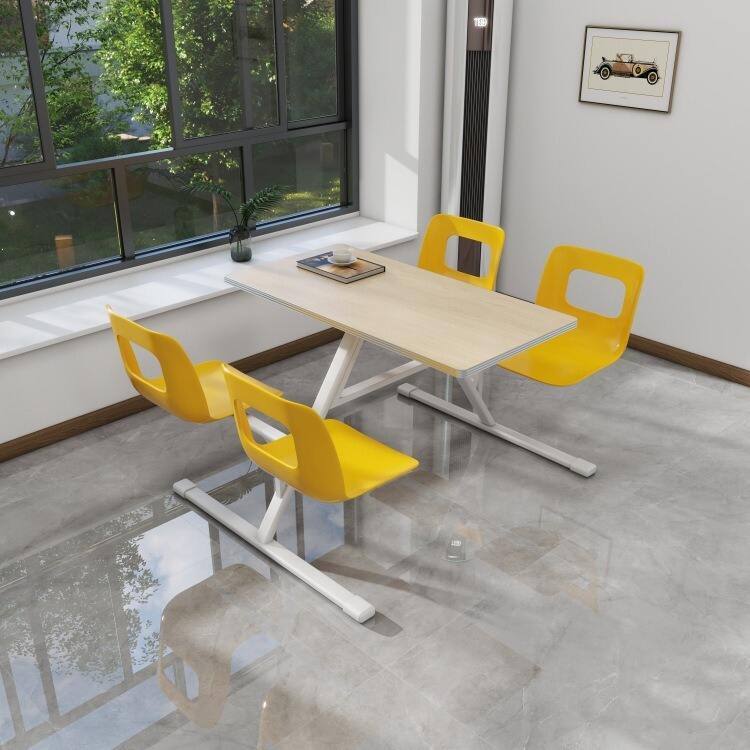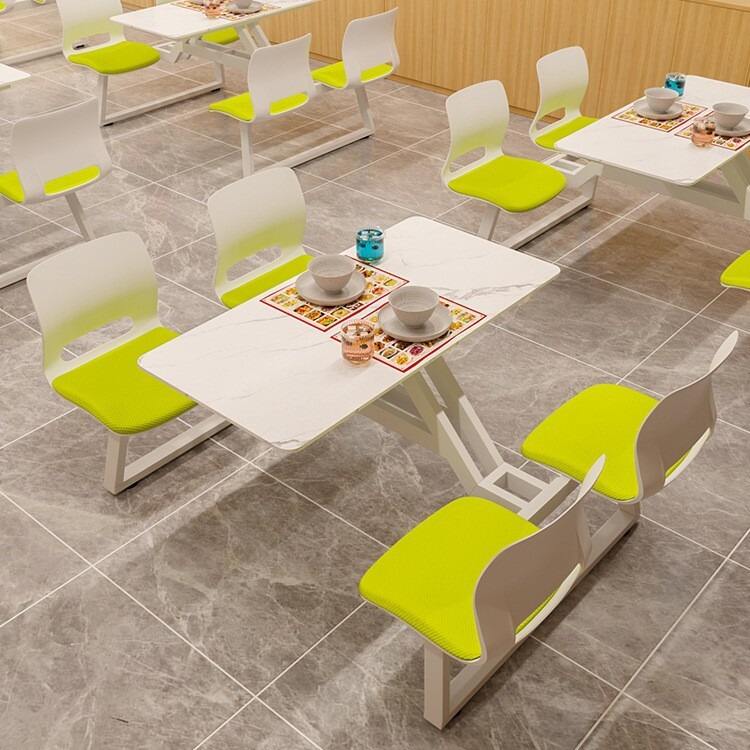How to Choose the Best Restaurant Table and Chair Combination for Your Space?
Introduction to Restaurant Furniture Selection
Designing a restaurant is a multi-layered process that involves food concept, décor, ambiance, and customer experience. One of the most important aspects of this process is the choice of furniture, specifically the restaurant table and chair. These are not just functional items but key elements that influence the comfort, style, and efficiency of a dining space. The right restaurant table and chair combination can maximize seating capacity, enhance customer satisfaction, and reinforce the identity of the establishment. Choosing the wrong combination, on the other hand, may lead to a cramped layout, inconsistent design, or discomfort for guests, ultimately affecting the restaurant’s success.
The Importance of a Well-Matched Table and Chair Combination
Creating a Cohesive Atmosphere
The restaurant table and chair work together to set the tone of the space. Matching styles, colors, and materials create a sense of harmony, while mismatched furniture can feel chaotic or unprofessional. For example, a rustic restaurant may pair wooden farmhouse tables with solid chairs in natural finishes, while a sleek modern café might use glass tables with metal-framed chairs. Cohesion ensures that the visual experience matches the overall theme.
Supporting Comfort and Functionality
Beyond aesthetics, the restaurant table and chair must provide comfort and practicality. Tables should be the right height for the chairs, and the chairs should provide ergonomic support for guests. If the combination feels unbalanced—such as a low table with high chairs—diners may feel awkward and uncomfortable. This discomfort can shorten visits and reduce repeat business.
Maximizing Space Efficiency
A good restaurant table and chair combination optimizes the available space. The dimensions, shapes, and arrangements must allow for easy movement of staff and customers while maximizing seating capacity. The combination must balance efficiency with customer comfort, ensuring the space feels neither overcrowded nor underutilized.
Factors to Consider When Selecting Tables and Chairs
Restaurant Concept and Theme
The concept of the restaurant should guide furniture choices. A fine dining venue requires elegant tables and upholstered chairs, while a casual fast-casual restaurant benefits from sturdy, easy-to-clean surfaces and lightweight chairs. Aligning the restaurant table and chair with the brand identity ensures a consistent message and customer experience.

Material Selection
The material of the restaurant table and chair affects both durability and aesthetics. Wood conveys warmth and tradition, while metal offers sleek modernity and strength. Upholstered chairs paired with polished wood tables create luxury, while resin or laminate tables with stackable chairs suit high-traffic casual restaurants. Choosing materials that reflect the restaurant’s theme while meeting practical needs is essential.
Ergonomics and Comfort
Comfort is crucial for customer satisfaction. Chairs should provide proper back support, and seat height must align with the table’s dimensions. Typically, the height difference between a table and chair should be about 10 to 12 inches for comfortable dining. Tables should provide enough space for plates, glasses, and cutlery without feeling cluttered, and chairs should allow guests to sit comfortably for the duration of the meal.
Durability and Maintenance
Restaurant furniture undergoes heavy use, so durability is non-negotiable. Tables should resist scratches, stains, and heat, while chairs must withstand frequent movement. At the same time, furniture must be easy to clean to maintain hygiene. Durable combinations reduce long-term costs by minimizing the need for replacements and repairs.
Layout and Spacing
The restaurant table and chair arrangement affects traffic flow and comfort. Sufficient spacing between tables ensures privacy and allows servers to move freely. Restaurants must also comply with accessibility regulations, ensuring that layouts accommodate guests with mobility needs. Choosing appropriately sized furniture is key to achieving the right balance between capacity and comfort.
Popular Restaurant Table and Chair Combinations
Wooden Tables with Upholstered Chairs
This classic combination is popular in fine dining and mid-range restaurants. Wooden tables exude warmth and authenticity, while upholstered chairs provide comfort and luxury. This pairing is ideal for establishments that want to encourage longer visits and create a cozy, elegant atmosphere.
Metal Tables with Industrial Chairs
Industrial-style restaurants often use metal tables paired with simple steel or wooden chairs. This combination emphasizes durability and urban aesthetics, making it perfect for modern cafés or casual dining spaces with an edgy theme.
Communal Tables with Bench Seating
Long wooden tables paired with benches or simple chairs create a communal atmosphere that fosters interaction. This setup is ideal for casual restaurants, breweries, or spaces that emphasize shared experiences and high turnover.
Glass Tables with Minimalist Chairs
For modern or upscale restaurants, glass tables combined with sleek, minimalist chairs create a contemporary, polished look. This combination works well in venues that focus on style and design as much as dining.
Outdoor Tables with Weather-Resistant Chairs
In restaurants with patios or outdoor areas, combinations of stone, metal, or treated wood tables with weather-resistant rattan or aluminum chairs are common. These are designed for durability while creating an inviting al fresco dining atmosphere.
Practical Tips for Choosing the Best Combination
Match Proportions
The height and size of tables must align with the dimensions of chairs. A mismatch can lead to awkward dining positions and discomfort. Standard dining tables are typically 28 to 30 inches high, while chairs are usually 17 to 19 inches in height.
Balance Style with Comfort
Striking the right balance between aesthetics and ergonomics is key. Chairs may look stylish but should not compromise on comfort, while tables must be attractive without sacrificing practicality. Testing furniture before purchasing helps ensure balance.
Consider Flexibility
Opt for tables and chairs that can be rearranged to accommodate different group sizes. Square or rectangular tables that can be joined together offer flexibility, while lightweight chairs make reconfiguration easier.
Budget Wisely
While it may be tempting to invest heavily in design, furniture must also meet financial constraints. High-quality materials may cost more upfront but save money over time through durability and reduced maintenance needs.
The Future of Restaurant Furniture Design
Sustainability
Eco-friendly restaurant table and chair options are increasingly popular. Using reclaimed wood, bamboo, or recycled materials reflects environmental responsibility and appeals to eco-conscious customers.
Smart Furniture
As technology integrates into dining spaces, future tables may feature built-in charging ports, and chairs may use ergonomic enhancements for improved comfort.
Customization
More restaurants are turning to custom-made furniture that reflects their unique brand identity. Custom combinations of tables and chairs create a one-of-a-kind atmosphere that enhances memorability.
Conclusion
The restaurant table and chair combination is one of the most critical decisions in restaurant design. These elements define the layout, comfort, and aesthetics of the dining space, shaping both the ambiance and customer experience. Choosing the best combination involves considering the restaurant’s concept, materials, ergonomics, durability, and layout. Popular combinations range from classic wood and upholstered seating to modern glass and minimalist styles, each contributing differently to the overall atmosphere. By balancing comfort, functionality, and design, restaurateurs can select tables and chairs that not only meet operational needs but also create memorable dining experiences that encourage repeat visits.
FAQ
Why is the restaurant table and chair combination important?
Because it influences comfort, layout efficiency, brand identity, and customer satisfaction, directly impacting the dining experience.
What is the ideal height difference between tables and chairs?
The recommended difference is about 10 to 12 inches, ensuring comfortable dining posture for guests.
What materials are best for durability?
Wood, metal, and weather-resistant composites are durable choices, while upholstered chairs add comfort but require more maintenance.
Can mismatched furniture work in restaurants?
Yes, if done intentionally and with a clear design concept, mismatched tables and chairs can create a unique, eclectic ambiance.
Are communal tables a good option?
They are effective in casual dining or social concepts but may not suit fine dining where privacy is expected.
How can small spaces optimize furniture layout?
By using compact tables, lightweight chairs, and flexible configurations that maximize seating without overcrowding.
Should comfort or aesthetics be prioritized?
Both are equally important. Comfortable but unattractive furniture weakens brand identity, while stylish but uncomfortable furniture discourages repeat visits.
What role does furniture play in branding?
Restaurant tables and chairs reflect the theme and identity, helping communicate the brand story to customers.
Are outdoor furniture needs different from indoor ones?
Yes, outdoor furniture must be weather-resistant, durable, and easy to maintain, while still matching the restaurant’s style.
What future trends will influence restaurant furniture?
Sustainability, smart features, and customization will dominate, offering practical and stylish solutions for modern dining spaces.
Table of Contents
- How to Choose the Best Restaurant Table and Chair Combination for Your Space?
- Introduction to Restaurant Furniture Selection
- The Importance of a Well-Matched Table and Chair Combination
- Factors to Consider When Selecting Tables and Chairs
- Popular Restaurant Table and Chair Combinations
- Practical Tips for Choosing the Best Combination
- The Future of Restaurant Furniture Design
- Conclusion
-
FAQ
- Why is the restaurant table and chair combination important?
- What is the ideal height difference between tables and chairs?
- What materials are best for durability?
- Can mismatched furniture work in restaurants?
- Are communal tables a good option?
- How can small spaces optimize furniture layout?
- Should comfort or aesthetics be prioritized?
- What role does furniture play in branding?
- Are outdoor furniture needs different from indoor ones?
- What future trends will influence restaurant furniture?


